For more than half a century, creatives have attempted to breakthe grip of the master sense, cracking open the experientialworld in the process.

What comes to mind when you encounter the term “sensory design”? Chances are it is an image: a rain room, a funky eating utensil, a conspicuously textured chair. But the way things actually feel, smell, even taste, is much harder to capture. This difficulty points to how deeply ingrained the tyranny of vision is. Might the other senses be the keys to unlocking broader empirical truths? Does the ocular-centric bias of art, architecture, and design actually preclude a deeper collective experience?
Such questions are at the heart of the current Cooper Hewitt exhibition The Senses: Design Beyond Vision, curated by Ellen Lupton and Andrea Lipps. “People go to museums because they want an authentic experience with real things, but their only experience is visual; how is that authentic?” Lupton asks. With some 78 projects, the show takes on the idea that sensory design, or consciously designing for the full spectrum of sensory experience, can better connect us to the material world and help us find our proper place in it.
While sensory design has entered popular discourse only in the past decade, the ideas behind it first emerged in the 1950s, in the work of radical art collectives Zero in Europe and Gutai in Japan. Recognizing the limited capacity of sight alone to affect their audiences, these artists directed their work at all the senses. The result was a profound form of critique that confronted the consumerist postwar paradigm shift head-on.
Zero sought an entirely fresh approach, summoning an art that would incorporate a full sensory spectrum. Light, sound, reflection, and optical illusions were second nature, as were live actions such as striking, slicing, burning, and setting off explosions. Gutai followed a similar range of activities but was a touch more theatrical: Large-scale multimedia environments and Technicolor dresses made of light bulbs were common props for equally peculiar performances.
Denne historien er fra October 2018-utgaven av Metropolis Magazine.
Start din 7-dagers gratis prøveperiode på Magzter GOLD for å få tilgang til tusenvis av utvalgte premiumhistorier og 9000+ magasiner og aviser.
Allerede abonnent ? Logg på
Denne historien er fra October 2018-utgaven av Metropolis Magazine.
Start din 7-dagers gratis prøveperiode på Magzter GOLD for å få tilgang til tusenvis av utvalgte premiumhistorier og 9000+ magasiner og aviser.
Allerede abonnent? Logg på
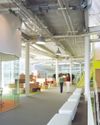
No New Buildings
The energy already embodied in the built environment is a precious unnatural resource. It’s time to start treating it like one.

The Circular Office
Major manufacturers are exploring every avenue to close the loop on workplace furniture.
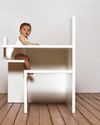
Signs of Life
Designers, curators, and entrepreneurs are scrambling to make sense of motherhood in a culture that’s often hostile to it.
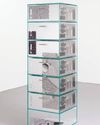
Interspecies Ethic
In probing the relationship between humans and nature, two major exhibitions question the very foundations of design practice.
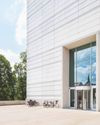
Building on Brand
The Bauhaus turned 100 this year, and a crop of museum buildings sprang up for the celebration.
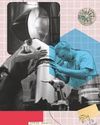
Building for Tomorrow, Today
Radical change in the building industry is desperately needed. And it cannot happen without the building trades.

Strength from Within
Maggie’s Centres, the service-focused cancer support network, eschews clinical design to arm patients in their fight for life.

Next-Level Living
The availability of attractive, hospitality-grade products on the market means everyday consumers can live the high life at home.
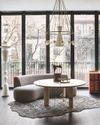
Mi Casa, Su Casa
Casa Perfect creates a memorable shopping experience in lavish private homes.

Enter The Culinarium
AvroKO imagines the future of residential amenities—where convenience, comfort, and sustainability meet.